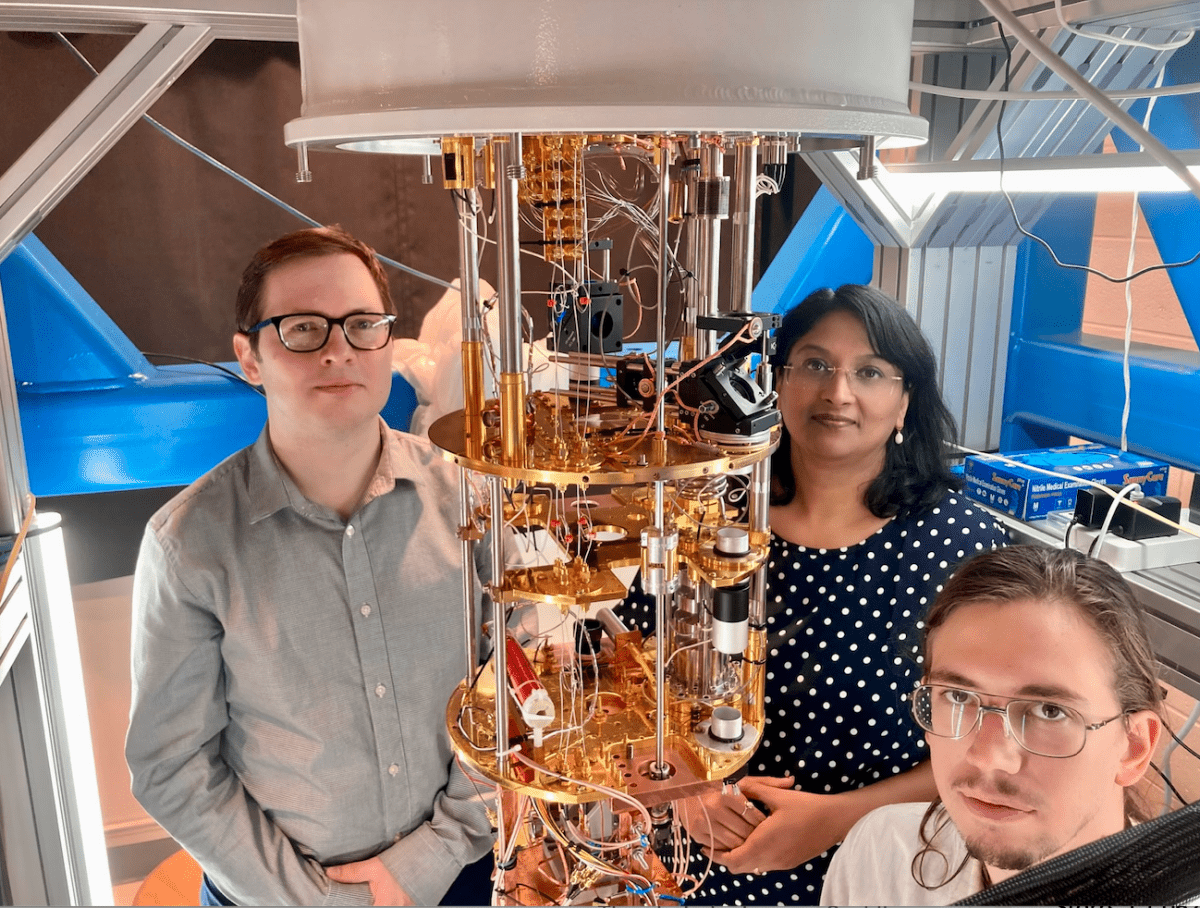
NSF award to Profs. Jain and Sochnikov
Professors Jain and Sochnikov received NSF research grant entitled “New Quantum Elastocaloric Demagnetization Refrigeration for the Millikelvin Range”. A major focus of their research will be the cooling of quantum chips. For this purpose, their teams will study ‘spin liquids’, which can be harnessed to achieve millikelvin temperatures without magnetic fields. At such low temperatures, […]
[Read More]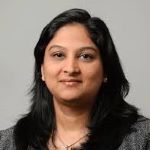
Prof. Jain is organizing International Workshop on Oxide Electronics
Associate Professor of Physics Menka Jain and the Institute of Materials Science is co-organizing a workshop-28th International Workshop on Oxide Electronics (IWOE) in Maine next month. The IWOE series has become an important venue to discuss recent advances and emerging trends in this developing field. The aim of the workshop is to provide an interdisciplinary […]
[Read More]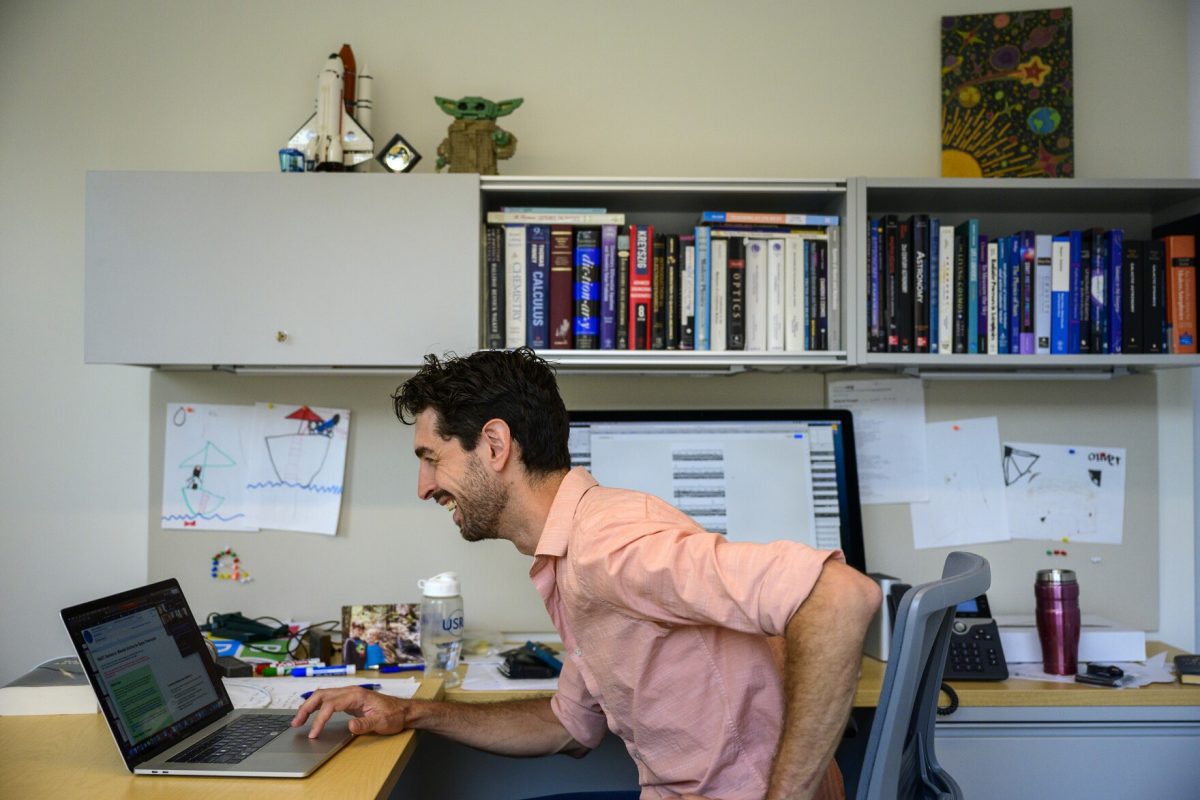
Prof. Jonathan Trump Interviews about the James Webb Space Telescope
The James Webb Space Telescope released its first science observations on July 12 with much fanfare and excitement across the globe. UConn Physics Professor Jonathan Trump is part of the Cosmic Evolution Early Release Science collaboration that was awarded some of the first observations on the transformative new space telescope. Prof. Trump was interviewed by several local media outlets, […]
[Read More]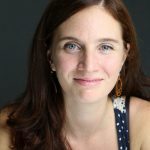
Prof. Cara Battersby Awarded an NSF CAREER grant
Professor Cara Battersby has been awarded an NSF CAREER grant! “The Faculty Early Career Development (CAREER) Program is a Foundation-wide activity that offers the National Science Foundation’s most prestigious awards in support of early-career faculty who have the potential to serve as academic role models in research and education and to lead advances in the […]
[Read More]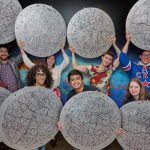
Plates that Helped Map the Universe, Now at UConn
UConn is now home to tools that have played an instrumental role in mapping the universe — 10 large aluminum plates used as part of the Sloan Digital Sky Survey (SDSS). Measuring 32 inches across, one-eighth of an inch thick, and with thousands of tiny holes drilled in them, these plates may not be the […]
[Read More]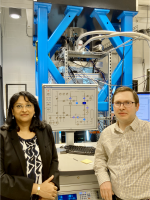
Two Physicists are in Project Daedalus that Focuses on Materials for Aerospace in New $4.7 Million Contract
UConn’s collaboration with the Department of Defense Air Force Research Laboratory (AFRL) is launching a new project. It is titled Multiscale Modeling and Characterization of Metamaterials, Functional Ceramics and Photonics. This is a $4.7 M contract with $1M for Physics. The project’s goal is to explore and advance the understanding of electronic, photonic, magnetic, and […]
[Read More]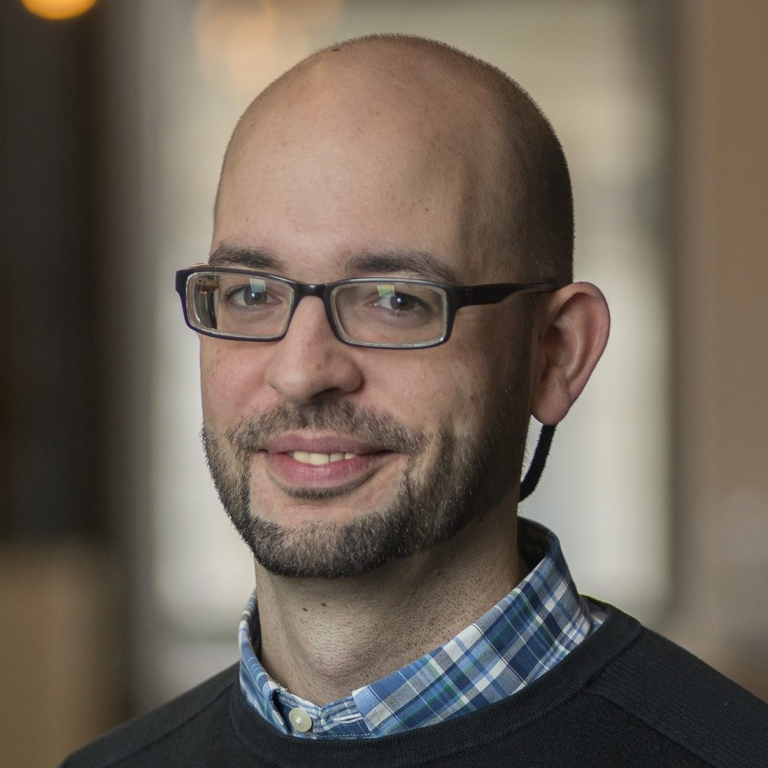
Research of UConn Professor Daniel Angles-Alcazar featured in UConn Today
The article The Largest Suite of Cosmic Simulations for AI Training Is Now Free to Download; Already Spurring Discoveries describe research of a team of astrophysicists that includes UConn Professor of Physics Daniel Anglés-Alcázar. “Machine learning is revolutionizing many areas of science, but it requires a huge amount of data to exploit,” says Anglés-Alcázar. “The […]
[Read More]
Prof. J. Trump interview about the launch of the James Webb telescope
UConn Physics Professor Jonathan Trump is part of a group of scientists who will be the first to conduct research using the James Webb space telescope. The local Fox News TV station conducted an interview with Prof. Trump.
[Read More]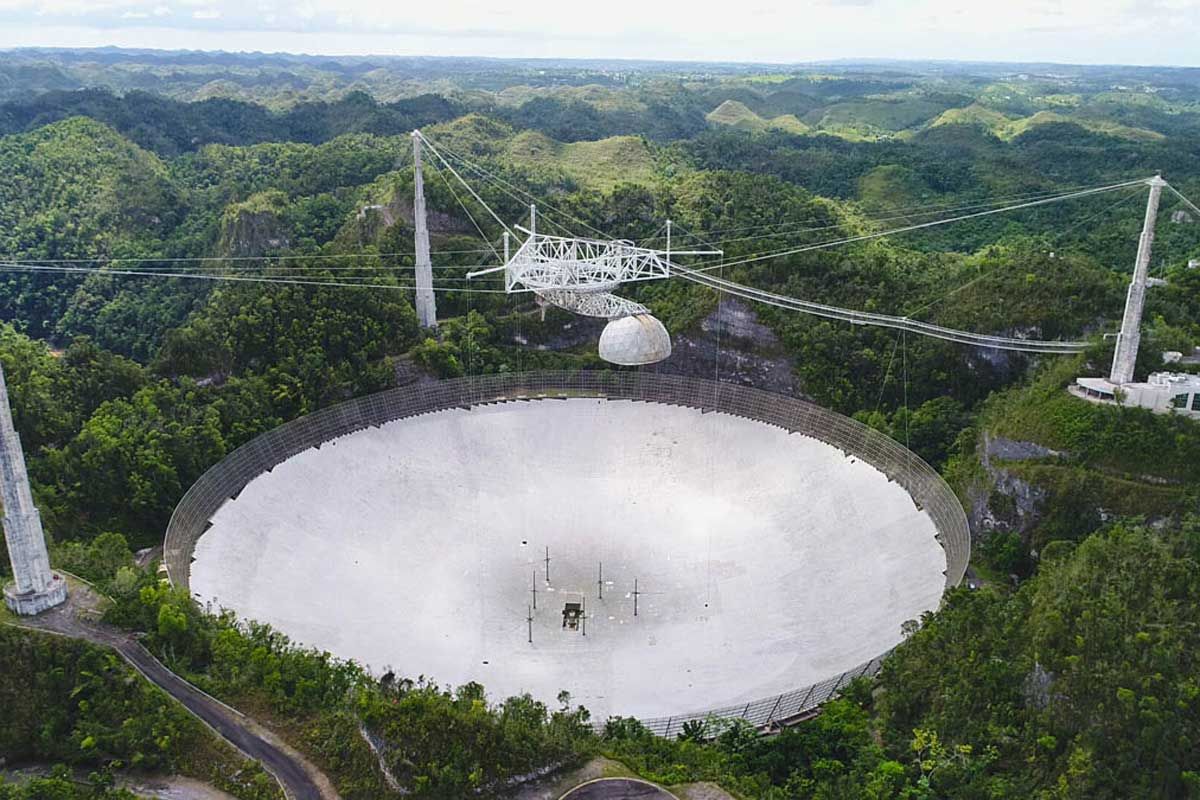
U.S. Senators introduce a resolution to recognize the Arecibo Observatory Telescope
On Friday December 3rd, a group of U.S. Senators, Richard Blumenthal (D-CT), Edward J. Markey (D-MA), Marco Rubio (R-FL), Elizabeth Warren (D-MA), and Rick Scott (R-FL) introduced a bipartisan a resolution to recognize the significant scientific, educational, and economic contributions made by the Arecibo Observatory telescope. “The telescope at Puerto Rico’s Arecibo Observatory was a […]
[Read More]
Prof. Chiara Mingarelli awarded NSF grant
Chiara Mingarelli, Assistant Professor of Physics at UConn, is the lead researcher on a $650,000 Collaborative Research Grant from the National Science Foundation, half of which is earmarked for UConn, to conduct an experiment to prove the existence of supermassive black hole binaries. This grant will combine, for the first time, traditional astronomy with gravitational […]
[Read More]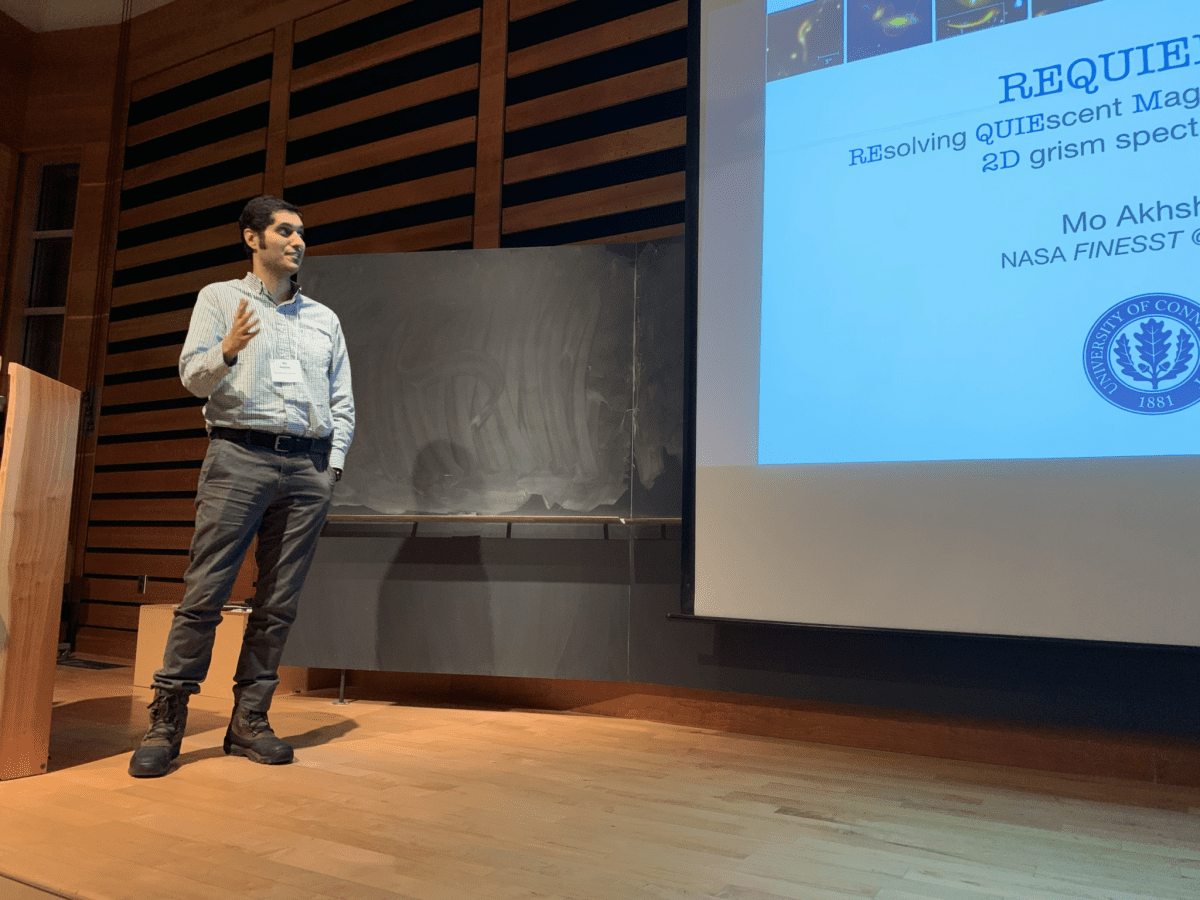
A Physics Ph.D. Student’s Step-By-Step Journey to Storrs and Distant Galaxies
UConn Physics graduate student Mohammed (Mo) Akhshik works on data gathered using the Hubble Space Telescope (HST) and has led to exciting discoveries, some while he served as the science Principle Investigator of the REQUIEM HST program from which he is co-author on two publications, one in Nature and one in Nature Astronomy. Akhshik is also […]
[Read More]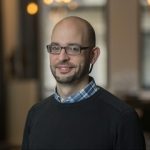
Professor Daniel Anglés-Alcázar research featured in ‘UConn Today’ and CBC radio interview
At the center of galaxies, like our own Milky Way, lie massive black holes surrounded by spinning gas. Some shine brightly, with a continuous supply of fuel, while others go dormant for millions of years, only to reawaken with a serendipitous influx of gas. It remains largely a mystery how gas flows across the universe […]
[Read More]
Physics alumnus Prof. Douglas Goodman and Professor Emeritus Winthrop Smith Featured in Online Peer Review Journal
Prof. Emeritus Winthrop Smith and former student Prof. Douglas Goodman (Quinnipiac University) Edit Special Issue of Open Access Journal Atoms, on Low Energy Interactions between Ions and Ultracold Atoms The Special Issue of the online journal Atoms is a collection of current peer-reviewed articles by experts in the field of ultracold collisions and reactions involving […]
[Read More]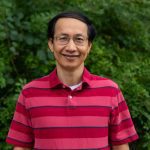
New Faculty Hire-Dr. Anh-Thu Le
The Physics Department welcomes our newest faculty member, Dr. Anh-Thu Le, although he prefers to be called simply AT. AT worked for many years at the well-known James R. Macdonald Laboratory, rising to the rank of Research Professor. He worked alongside a world-known theorist, Dr. Chii-Dong Lin. Dr. Le went on to become an Assistant […]
[Read More]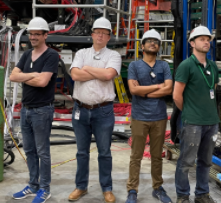
Professor Puckett’s Group Prepares New Measurements of “femtoscopic” Neutron Structure at Jefferson Lab
Professor Andrew Puckett’s research group is currently leading, as part of a collaboration of approximately 100 scientists from approximately 30 US and international institutions, the installation in Jefferson Lab’s Experimental Hall A of the first of a series of planned experiments known as the Super BigBite Spectrometer (SBS) Program, with beam to Hall A tentatively […]
[Read More]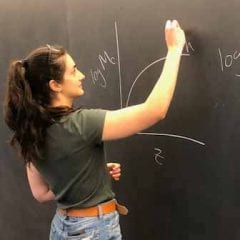
Undergraduate Researcher Nicole Khusid featured in UConn Today
Physics major Nicole Khusid, a rising senior at UConn, was featured in a UConn Today article about her research. Nicole has been working on gravitional lensing of distant sources of gravitational waves, seeking to understand their multimessenger signals and detectability by future astrophysics facilities. Nicole was awarded a SURF (Summer Undergraduate Research Fund) award to […]
[Read More]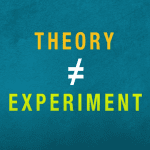
Standard model challenged by new measurement
It seems that the muon, a heavier partner of the electron, may be breaking what have been understood as the laws of physics. The findings announced on April 7th were met with excitement and speculation at what this might mean. UConn physics researchers Professor Thomas Blum and Assistant Professor Luchang Jin helped pioneer the theoretical physics behind the findings.
[Read More]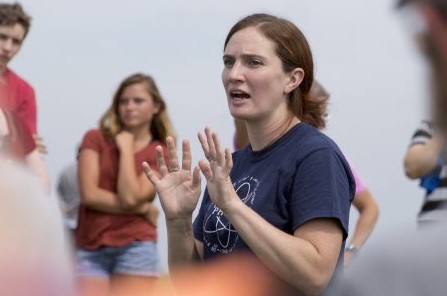
Prof. Battersby’s research featured in UConn Today article
Professor Cara Bettersby’s research is featured in the article “The Study of Big Data: How CLAS Researchers Use Data Science” published by UConn Today. Prof. Battersby’s work focuses on describing and studying the center of the Milky Way galaxy, which she calls an “experimental playground” for the distant cosmos. Her work described the spectroscopy of […]
[Read More]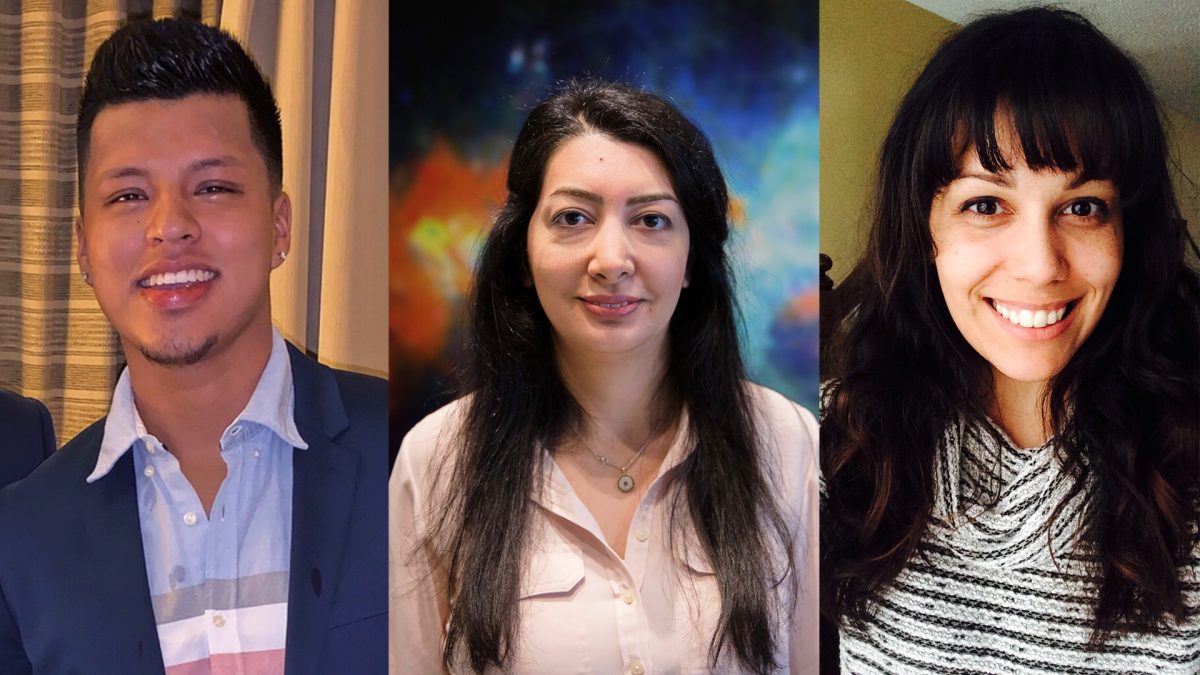
Dr. Yasaman Homayouni featured in CLAS story on 2021 graduates
New Physics PhD graduate Yasaman Homayouni is featured in a story on the class of 2021 from the College of Liberal Arts and Sciences (CLAS). For the full story of what inspired Yasaman and other students during their time at UConn, see the article in UConn Today.
[Read More]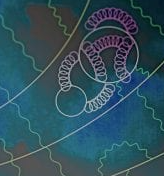
An anomalous moment for the muon
Mark Rayner/CERN The Fermilab E989 experiment announced the first new result on the muon’s anomalous magnetic moment in almost 20 years. The new measurement, combined with Brookhaven’s E821, has increased the discrepancy with the Standard Model value to 4.2 standard deviations. UConn Professors Tom Blum and Luchang Jin explain the theory calculations in a feature […]
[Read More]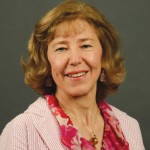
Professor Nora Berrah Awarded a Blaise Pascal Chaire d’Excellence to Conduct Research in France
Professor of Physics Nora Berrah has been awarded the International Blaise Pascal Chaire d’Excellence, a prestigious honor whose previous winners include scientists and scholars from a wide range of disciplines, including multiple Nobel laureates. Her award was selected by a committee of scientists and voted on by the Permanent Commission Regional Council of the Région […]
[Read More]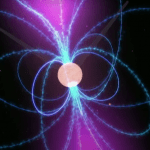
A Signal from Beyond
UConn astrophysicist Chiara Mingarelli is part of a team of researchers who recently published data on a hint of a signal that sent ripples of excitement through the physics community. These monumental findings are the culmination of twelve and a half years of data gathered from NANOGrav — a network of pulsars across the galaxy — all in the hopes of detecting gravitational waves.
[Read More]
UConn Researcher an Architect for Astronomical Survey Making Observations Toward a New Understanding of the Cosmos
November 2, 2020 – Elaina Hancock – UConn Communications The Sloan Digital Sky Survey’s fifth generation – a groundbreaking project to bolster our understanding of the formation and evolution of galaxies, including the Milky Way – collected its very first observations on the evening of October 23. Image: The Sloan Digital Sky Survey’s fifth generation […]
[Read More]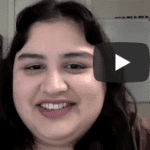
AAS Author Interview with Gloria Fonseca Alvarez
UConn graduate student Gloria Fonseca Alvarez was featured with a video in the Author Interview series produced by the American Astronomical Society (AAS). In this video, Gloria talks about her work to understand the inner environments of black holes. The paper highlighted in the video shows that the orbits of emission-line gas around supermassive black holes are often smaller than expected from previous observations.
[Read More]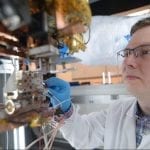
Stretching Makes Superconductor
Most superconductors only work when they’re super cold. Chemists and metallurgists have experimented with different combinations of elements for years, trying to get superconductors that work at temperatures close to room temperature. Sochnikov and his students are thinking about it differently. What if mechanical changes such as squeezing or stretching could make a material a superconductor?
[Read More]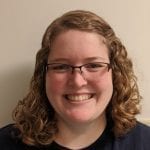
New Physics Faculty: Erin Scanlon
Erin Scanlon joins our Department in fall 2020 as Assistant Professor in Residence at the Avery Point Campus. Erin comes to UConn with an impressive track record of university teaching experience and scholarship in physics education research (PER). After earning a master’s degree in physics from Georgia Institute of Technology, Erin joined the faculty at […]
[Read More]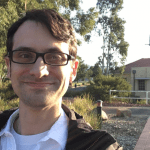
New Physics Faculty: Chris Faesi
We are very excited to extend a warm welcome to a new UConn Physics Faculty member, Dr. Christopher Faesi. Chris is an astrophysicist, specializing in both observational work and modelling, primarily in the study of star formation. He got his PhD at Harvard University, followed by a postdoc at the Max Planck Institute for Astronomy […]
[Read More]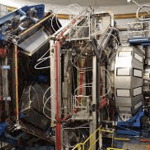
Prof. Kyungseon Joo named Chair of CLAS Collaboration at Jefferson Lab
Kyungseon Joo, a professor of physics, has been named Chair of the CLAS Collaboration, one of the largest international collaborations in nuclear physics. CLAS involves 50 institutions from 9 countries and has about 250 collaborators. The collaboration recently completed the upgrade of the CEBAF Large Acceptance Spectrometer (CLAS12) for operation at 11 GeV beam energy […]
[Read More]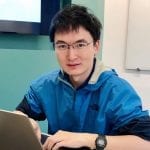
Professor Luchang Jin receives prestigious DOE Early Career Award
Assistant Professor of Physics Luchang Jin has been chosen to receive a prestigious Early Career Award from the US Department of Energy’s Office of High Energy Physics (HEP) for 2020. The amount of the award is $750,000 to be used over five years. The DOE Early Career Award is extremely competitive: this year only 16 scientists in […]
[Read More]
Jonathan Trump wins NSF Early Career Award
Jonathan Trump, Assistant Professor of Physics, will receive $738,090 over five years to compile a census of supermassive black holes in the universe. This will give insights into how supermassive black holes and galaxies evolve across cosmic time. Trump will also develop a bridge program for underrepresented undergraduate physics majors at UConn to increase their […]
[Read More]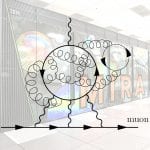
New result for part of muon anomaly
Professors Tom Blum and Luchang Jin, along with colleagues at BNL and Columbia, Nagoya, and Regensburg universities have completed a first-ever calculation of the hadronic light-by-light scattering contribution to the muon’s anomalous magnetic moment with all errors controlled. The work is published in Physical Review Letters as an Editor’s Suggestion and also appeared in […]
[Read More]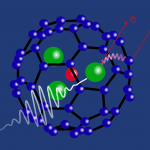
Radiation Damage Spreads
A single x-ray can unravel an enormous molecule, physicists report in the March 17 issue of Physical Review Letters. Their findings could lead to safer medical imaging and a more nuanced understanding of the electronics of heavy metals. Medical imaging techniques such as MRIs use heavy metals from the bottom of the periodic table as …
[Read More]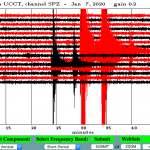
UConn seismometer detects Puerto Rico event
The Geophysics research group (Prof. Vernon Cormier and students) operate a seismic wave station that continuously monitors vibrations in the earth’s crust, many of which arise from seismic events that happen far away. These waves travel through the deep earth, and eventually make their way to the surface where they are detected. The above […]
[Read More]
Ron Mallett Featured on NBC Connecticut
Could traveling into the past be part of our future? Quite possibly, says Ron Mallett, a UConn emeritus professor of physics who has studied the concept of time travel for decades. Earlier this month, he spoke with NBC Connecticut reporter Kevin Nathan about his life and work as a theoretical physicist, and discussed how time […]
[Read More]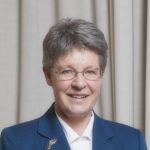
Professor Jocelyn Bell Burnell – 2019 Katzenstein Lecturer
The UConn Physics Department is delighted to announce that our 2019 Distinguished Katzenstein Lecturer will be Professor Dame Jocelyn Bell Burnell. Professor Dame Jocelyn Bell Burnell is world-famous for her discovery of pulsars in 1967. Pulsars are a special type of neutron star, the rotating dense remnant of a massive star. Pulsars have highly magnetic surfaces, and emit a beam of electromagnetic radiation […]
[Read More]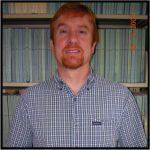
Research Spotlight: Exploring the nature of the universe with Dr. Thomas Blum
The Daily Campus published an article highlighting the research of Prof. Thomas Blum about Quantum Chromodynamics, a theory which describes the interactions between elementary particles. The development of this theory could help further understanding of the Standard Model of particle physics. The Standard Model is what physicists use to describe the fundamental building blocks of […]
[Read More]
Astronomer Jonathan Trump interviewed on UConn 360
UConn Astrophysicist and observational astronomer Jonathan Trump was a recent guest on UConn 360, a podcast from the Storrs campus of the University of Connecticut. In this conversation, Jonathan tells about how attending a lecture as an undergraduate at Penn State captured his interest and changed the course of his professional career. Now Jonathan offers […]
[Read More]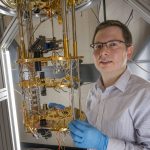
Breaking Up is Hard To Do (for Electrons in High Temperature Superconductors)
Physicists used to think that superconductivity – electricity flowing without resistance or loss – was an all or nothing phenomenon. But new evidence suggests that it’s not so clear cut, at least in copper oxide superconductors. “If we understood why copper oxide is a superconductor at such high temperatures, we might be able to synthesize a better one”, says UConn physicist Ilya Sochnikov. Sochnikov and his colleagues at Rice University, Brookhaven National Lab and Yale recently figured out part of that puzzle, and they report their results in the latest issue of Nature.
[Read More]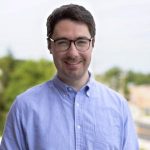
Daniel McCarron wins NSF Early Career Award
Daniel McCarron, assistant professor of physics, the College of Liberal Arts and Sciences, will receive $645,000 over five years for his work on the development of techniques to trap large groups of molecules and cool them to temperatures near absolute zero. The possible control of molecules at this low temperature provides access to new research applications, such as quantum computers that can leverage the laws of quantum mechanics to outperform classical computers.
[Read More]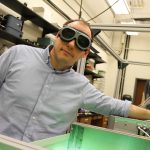
Meet the Researcher: Carlos Trallero
When Carlos Trallero started his academic career in physics, he had no idea he would become a pioneer in a field of research that uses high-power lasers to investigate atomic and molecular physical phenomena. Originally from Cuba, where there isn’t much funding for experimental research, Trallero began his academic career by studying theoretical physics. But as a senior graduate student at Stony Brook University, he got the chance to work in a lab doing experimental work and quickly recognized it was his true passion.
[Read More]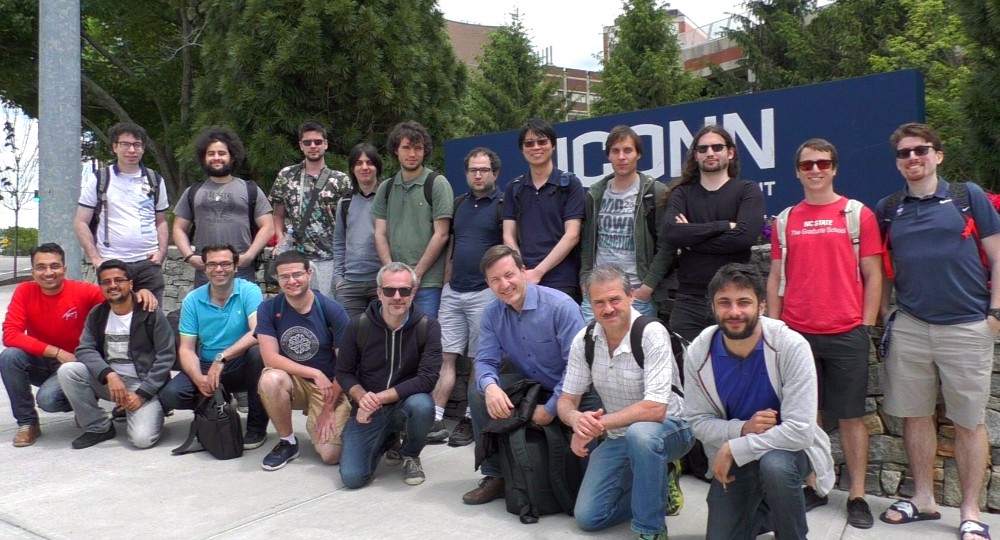
International Summer School “Strong interactions beyond simple factorization”
May 27-June 5 UConn Physics Department hosted an international summer school Strong interactions beyond simple factorization: collectivity at high energy from initial to final state. The school was supported by an NSF grant to Prof. Kovner and was devoted to modern approaches to the physics of high energy hadronic and heavy ion collisions.
[Read More]
Amelia Henkel, Graduating President of the Undergraduate Women in Physics Club, speaks about her time at UConn
Amelia Henkel, graduating Double Major in Physics and Human Rights, and President of the Undergraduate Women in Physics Club, speaks on the CLAS website about her passion for physics and human rights, and how she mastered challenges in her remarkably interdisciplinary curriculum. “We really need to interact with other disciplines,” says Amelia, “because that’s […]
[Read More]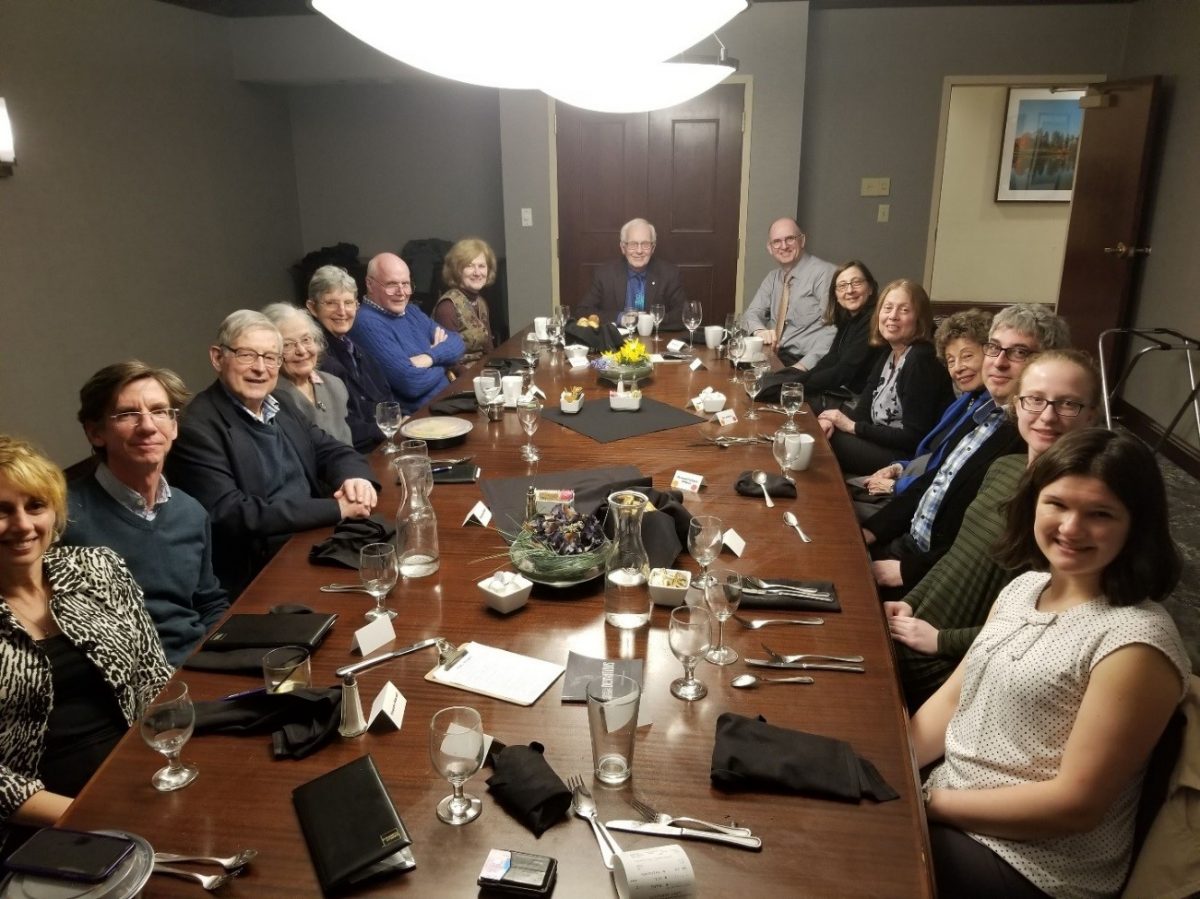
2019 Pollack Lecture
On April 11th and 12 of 2019 Prof. Paul Corkum of the Joint Attosecond Laboratory (University of Ottawa and the National Research Council of Canada) visited the department. Prof. Corkum’s main area of research is on the interaction of ultrashort laser pulses with matter broadly defined. His most notable contribution is perhaps the discovery of […]
[Read More]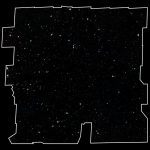
Astronomers Assemble View of Evolving Universe
The University of Connecticut’s Katherine Whitaker is part of a team of astronomers who have put together the largest and most comprehensive “history book” of the universe from 16 years’ worth of observations from NASA’s Hubble Space Telescope.This image, a mosaic of nearly 7,500 separate Hubble exposures, presents a wide portrait of the distant universe and contains roughly 265,000 galaxies that stretch back through 13.3 billion years to just 500 million years after the Big Bang.
[Read More]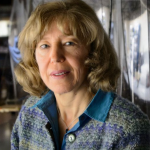
UConn Physics Professor elected to AAAS
UConn physics professor Nora Berrah has been elected to the historic and prestigious American Academy of Arts and Sciences. This year, more than 200 individuals were elected to the academy with compelling achievements in academia, business, government, and public affairs. Berrah, who was head of the physics department from 2014 to 2018, has been recognized […]
[Read More]
UConn Astronomers React to First Photo of a Black Hole
This image is the first ever taken of a black hole, captured by the Event Horizon Telescope (EHT) project. The black center is a direct view of the event horizon of a supermassive black hole with a mass of 6.5 billion times the Sun, lying at the center of the Virgo cluster of galaxies. The bright ring is emission from hot gas just above the event horizon, with an asymmetric shape caused by gravitational lensing of light in the strong gravity of the black hole. The EHT collaboration captured the image using a network of 8 radio telescopes that spanned the Earth.
[Read More]Charles Reynolds Lecture 2018: Prof Andrew Millis
The 2018 Reynolds lecture speaker was Prof Andrew Millis, a Professor of Physics at Columbia University and a co-Director of Center for Computational Quantum Physics at the Flatiron Institute. Dr. Millis’s research focus is theoretical condensed matter physics. He is the leading authority in theory of correlated materials, application of new theoretical ideas to actual […]
[Read More]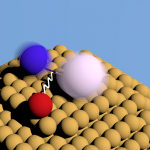
2 for the price of 1: UConn researcher finds new mechanism making double ionization an efficient process
An international research team headed by Dr. Aaron LaForge from the research group of Prof. Nora Berrah in the Physics department at UConn has recently discovered a new type of decay mechanism leading to highly efficient double ionization in weakly-bound systems. The team has published its results in the science journal “Nature Physics”. Ionization is […]
[Read More]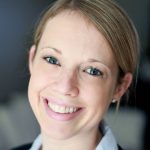
Kate Whitaker wins the Sloan Fellowship!
Original UConn Today article here Rising Star in Astrophysics Receives Sloan Foundation Fellowship February 19, 2019 – Jessica McBride – Office of the Vice President for Research Kate Whitaker, assistant professor of physics, stands next to a telescope inside the observatory on top of the Gant Complex on Feb. 14, 2019. (Peter Morenus/UConn Photo) As […]
[Read More]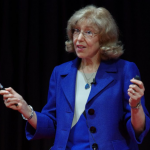
Nora Berrah Named 2018 AAAS Fellow
Physics professor Nora Berrah has been named a 2018 Fellow of the American Association for the Advancement of Science (AAAS). Prof. Berrah has been recognized for her distinguished contributions to the field of molecular dynamics, particularly for pioneering non-linear science using x-ray lasers and spectroscopy using synchrotron light sources. View full story on CLAS website.
[Read More]
Faculty Profile: UConn Astrophysicist Cara Battersby
A young Cara Battersby once scrawled out the phrase “Science is curious” in a school project about what she wanted to do when she grew up.
This simple phrase still captures Battersby’s outlook on her research about our universe.
Recently shortlisted for the 2018 Nature Research Inspiring Science Award, Battersby has been working on several projects aimed at unfolding some of the most compelling mysteries of galaxies near and far.
“I’m really interested in how stars are born,” Battersby says. “They’re the source of all life on Earth.”
Battersby is leading an international team of over 20 scientists to map the center of the Milky Way Galaxy using the Submillimeter Array in Hawaii, in a large survey called CMZoom. She was recently awarded a National Science Foundation grant to follow-up on this survey and create a 3D computer modeled map of the center of the Milky Way Galaxy.
[Read More]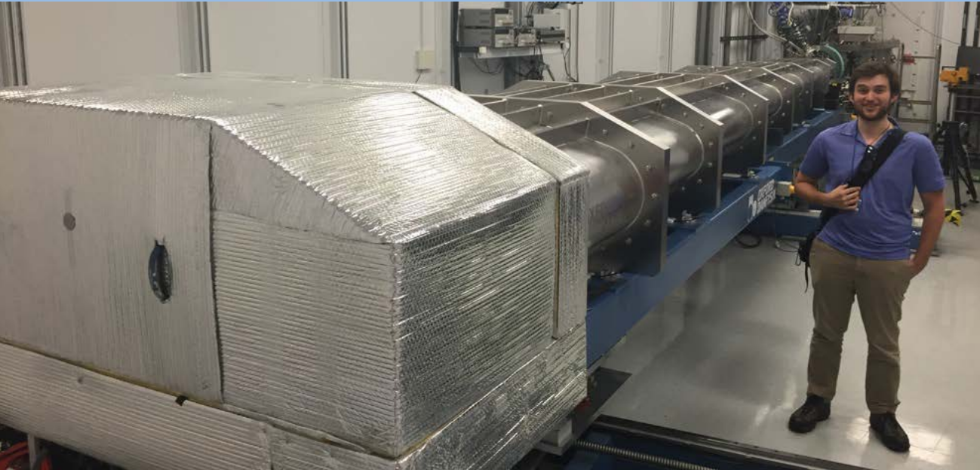
UConn Physics major wins national recognition for research
Connor Occhialini – Finalist 2018 LeRoy Apker Undergraduate Achievements Award by Jason Hancock One of our star undergraduates, Connor Occhialini, has won national recognition as a finalist in the 2018 LeRoy Apker Undergraduate Achievements Award competition for his research in the UConn Physics department. The honor and distinction is awarded not only for the excellent […]
[Read More]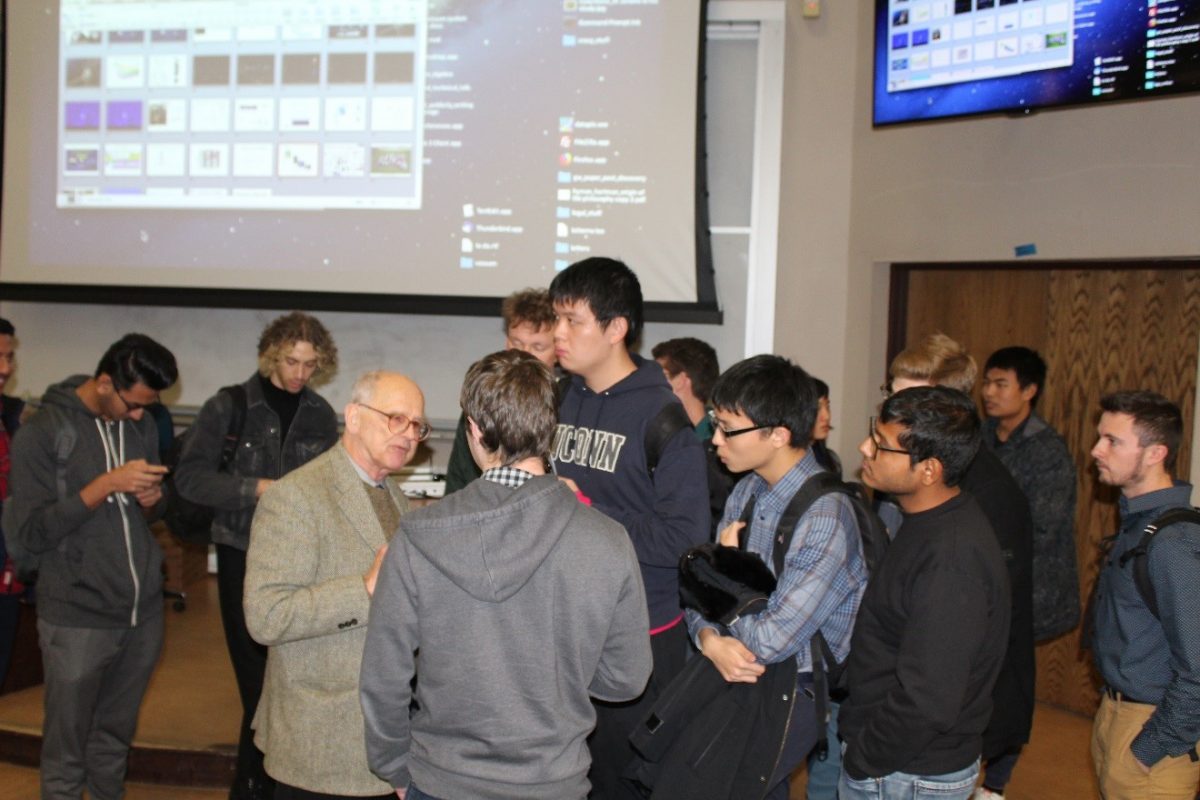
Professor Rainer Weiss: Katzenstein Distinguished Lecture
The Katzenstein Distinguished Lectures series continued in the 2018 academic year with its twenty second Nobel Laureate lecturer, with an October 26, 2018 lecture by Professor Rainer Weiss of the Massachusetts Institute of Technology. The title of Professor Weiss’ talk was “Exploration of the Universe with Gravitational Waves”, with abstract: The observations of gravitational waves […]
[Read More]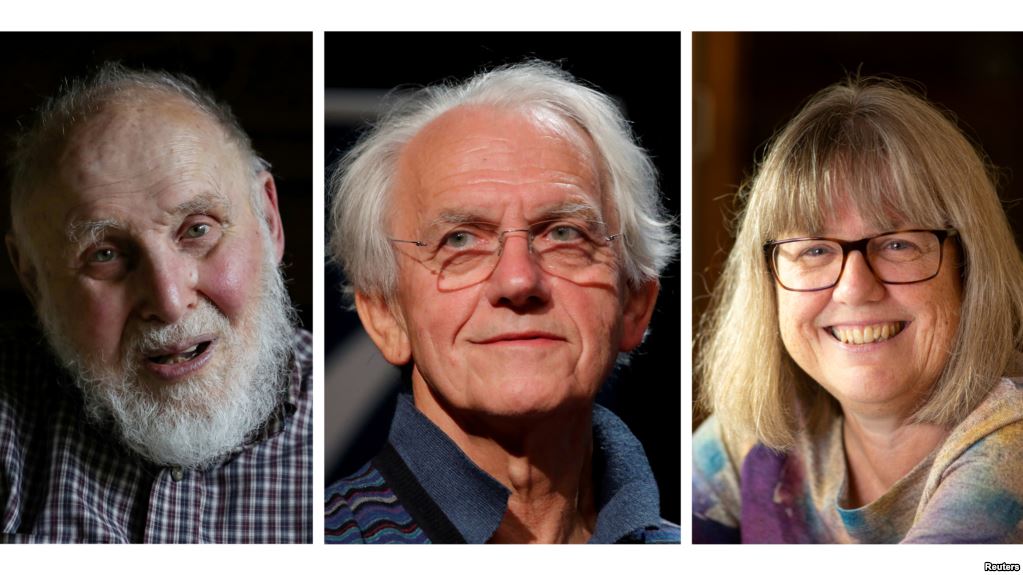
Physics Nobel prize 2018
The Physics Nobel prize in 2018 was awarded to Gérard Mourou (École Polytechnique, Université Paris-Saclay), Arthur Ashkin (Bell Laboratories and Lucent Technologies), and Donna Strickland (University of Waterloo) for ground-breaking inventions in the field of laser physics.
[Read More]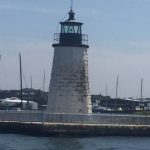
Workshop ‘Dynamic Quantum Matter’ organized by UConn faculty
Dynamic Quantum Matter, Entangled orders and Quantum Criticality Workshop, June 18- June 19, 2018, sponsored by UConn, NSF, Nordita, Villum Center for Dirac Materials, Institute for Materials Science. The conference focused on entangled and non-equilibrium orders in quantum materials.
[Read More]
Physics undergrad is the recipient of 2018 Mark Miller research award
Physics major Brenna Robertson has been selected as the recipient of the 2018 Mark Miller Undergraduate Research Award. Brenna’s proposal, which focuses on modeling supermassive black hole spin using spectral emission diagrams, was selected from among a strong pool of applicants. Brenna Robertson is working with Prof. Jonathan Trump. The Mark Miller Award is a […]
[Read More]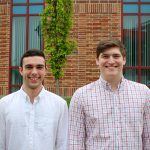
NASA awards to two physics undergraduate students
Undergraduate Physics Majors, Sam Cutler and Anthony (Josh) Machado, recently received awards from the NASA Connecticut Space Grant Consortium. Sam was awarded an Undergraduate Research Fellowship to perform research at UConn this summer working with Prof. Kate Whitaker. The title of his research project is “Examining High Redshift Rotation Curve Outside the Local Universe”. Josh […]
[Read More]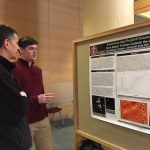
Annual Research Poster Day
The Physics Department Graduate Student Association, in collaboration with the faculty, organized the Annual Research Poster Day which was held this year on March 23, 2018. About 15 students presented their research in a poster presentation. Awards were presented to graduate students Erin Curry and Martin Disla, and an undergraduate student Sadhana Suresh.
[Read More]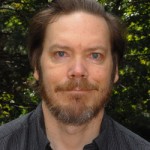
Prof. Wuosmaa has been awarded a 3-year grant
Prof Alan Wuosmaa has been awarded a grant for 3 years for Studies of exotic nuclei with transfer reactions. For the information about Prof. Wuosmaa research visit his home page.
[Read More]
Prof. Blum has been selected a “Fermilab Distinguished Scholar”
Professor Tom Blum has been selected a “Fermilab Distinguished Scholar”. Fermilab Distinguished Scholars are rotating multi-year appointments for U.S. theorists in either the Fermilab Theoretical Physics Department or the Theoretical Astrophysics Group. The Fermilab Distinguished Scholars program aims to: Strengthen connections between the Fermilab Theoretical Physics and Astrophysics groups and the wider U.S. particle-theory community. […]
[Read More]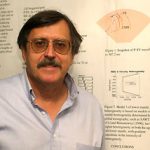
Prof. Cormier’s NSF award: Seismic Signatures of Inner Core Solidification
Professor Vernon F. Cormier from the Department of Physics, University of Connecticut has received a grant from the National Science Foundation to study the transition from liquid to solid in the Earth’s core using seismic wave measurements. Cormier’s project will determine the structure of the Earth’s inner core in relation to the processes that […]
[Read More]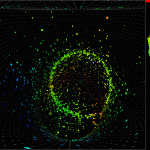
21st Annual Katzenstein Distinguished Lecture
Monday, March 26, 2018 The 21st Annual Katzenstein Distinguished Lecture was hosted by the UConn Physics Department, featuring Dr. Takaaki Kajita, 2015 Nobel Prize Winner from the University of Tokyo, speaking on “Oscillating Neutrinos.” After the lecture, a banquet with the speaker was held for members and guests of the department. We enjoyed welcoming alumni and […]
[Read More]
Physics students boost interdisciplinary research in materials
PhD student Lukasz Kuna and undergraduate Hope Whitelock participate in a symposium “Mesoscopic phenomena in ceramic materials” arranged by Materials Scientist Serge Nakhmanson at the “Electronic and Advanced Materials Conference” in Orlando, Florida. Four UConn students including Tulsi Patel, Krishna Chaitanya Pitike, Lukasz Kuna and Hope Whitlock showcased their research.
[Read More]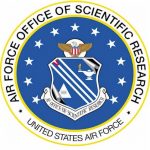
Prof. C. Trallero awarded multiple research grants
Professor Carlos Trallero has been granted $1.06 million from the Department of Defense, the U.S. Air Force and the Air Force Office of Scientific Research to study recollision physics at the nanoscale to help develop ultrafast electronics. This research will enhance the knowledge base of electron recollision dynamics at the nanoscale, which can be used to develop ultrafast light-driven electronics.
[Read More]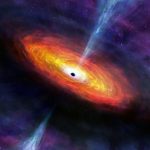
One Giant Leap in Mapping the Universe
An artist’s rendering of hot material falling into a supermassive black hole, creating what is called the accretion disk, shown in orange. Reverberation mapping measures the time it takes light to travel between two areas of the accretion disk. The ‘light echo’ enables direct measurement of the mass of the black hole. This reverberation mapping […]
[Read More]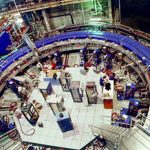
LQCD workshop to take place in Storrs
Muon g-2 Theory Initiative Hadronic Light-by-Light working group workshop
Workshop participants will discuss recent progress and plans to determine the hadronic light-by-light scattering contribution to the muon anomalous magnetic moment, which is expected to contribute the largest uncertainty in the Standard Model prediction. The goal of the workshop is to estimate current and expected systematic errors from lattice QCD, dispersive methods, and models and create a plan to address them in time for new experiments at Fermilab and J-PARC.
[Read More]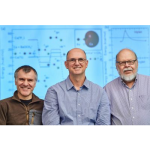
Ultracold group achieves new milestone in quantum control
December 19, 2017 – Colin Poitras – UConn Communications Scientists from three major research universities successfully manipulated the outcome of a chemical reaction and, in doing so, created a rare molecular ion. Through a process known as “controlling chemistry,” the researchers bonded an oxygen atom to two different metal atoms, creating the barium-oxygen-calcium molecular ion or BaOCa+ The same […]
[Read More]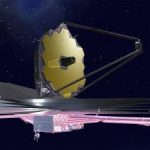
Astronomers granted early science time on James Webb space telescope
Two UConn physics professors will be among the world’s first scientists to explore the universe using the new James Webb Space Telescope. The highly competitive, peer-reviewed James Webb Space Telescope Early Release Science program was created to test the capabilities of the new observatory and to showcase the tools the telescope is equipped with. Of more than 100 proposals submitted, only 13 were chosen to participate in the early release phase, including two separate proposals involving UConn researchers Kate Whitaker and Jonathan Trump, both assistant professors of physics.
[Read More]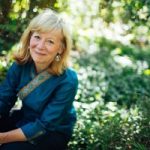
Special Lecture on Diversity and Inclusion
Solving the complex problems that we face in our world today requires a more talented workforce than we have ever needed before. Such a workforce must be comprised of a wide range of diverse talents and creative insights. No segment of the population can be ignored or overlooked in this talent search. This presentation will describe the most recent research that demonstrates the positive impact that social and informational diversity has on science and innovation, the reasons for this impact and the importance of committed leadership in achieving a strong and inclusive workplace where creativity and productivity is maximized.
[Read More]
Two UConn professors recognized as Fellows of the American Physical Society
The American Physical Society (APS) has named two UConn Physics faculty as APS Fellows. APS Fellowship is a distinct honor signifying recognition by one’s professional peers and is an honor bestowed by election. The criterion for election is exceptional contributions to the physics enterprise; e.g., outstanding physics research, important applications of physics, leadership in or service to physics, […]
[Read More]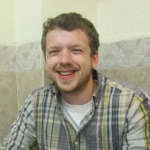
Alex Barnes, PhD April 2017, begins post-doctoral fellowship in Nuclear Physics at CMU
In May, 2017 UConn alumnus Alex Barnes was awarded a postdoctoral fellowship in Nuclear Physics at Carnegie Mellon University, working in the group of Prof. Curtis Meyer. Alex begins this appointment immediately after completing his PhD at the University of Connecticut in April 2017, under the guidance of Prof. Richard Jones. In his new position, […]
[Read More]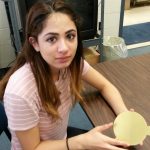
UConn undergraduate researcher developing new radon detector for household use
The U.S. Centers for Disease Control lists radon as a primary cause of lung cancer, second only to smoking. The Environmental Protection Agency estimates that 20,000 deaths each year from lung cancer in the U.S. are the result of exposure to radon in the living environment. It is believed that as many as 1 in […]
[Read More]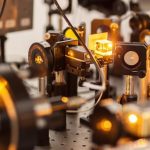
Undergraduate Sam Entner traps cold atoms in Physics lab for summer research project
As a research assistant in the physics department at UCONN, I assisted in the alignment, maintenance, and principles of operation of the various apparatuses and measurement techniques used within cold atomic, molecular, and optical (AMO) experimental physics research. This included optical components, laser alignment, laser locking, saturation absorption spectroscopy, and electrodynamic ion trapping. Some specific […]
[Read More]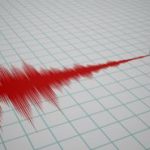
Detection of recent seismic events in Storrs
Attached is our record for the Mw 6.9 earthquake associated with eruptions of the Kilauea volcano on the big island of Hawaii. The large waves arriving after 2300 GMT are surface waves (elastic energy that exponentially decays with depth away from the surface) traveling from the earthquake to us. The beating pattern is characteristic of […]
[Read More]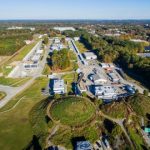
The newly upgraded CEBAF Accelerator opens door to strong force studies
Scientists have been rigorously commissioning the experimental equipment to prepare for a new era of nuclear physics experiments. This equipment is at the newly upgraded Continuous Electron Beam Accelerator Facility (CEBAF) at Jefferson Lab in Newport News, Virginia. These activities have already led to the first scientific result. This research demonstrates the feasibility of detecting a potential new kind of particles known collectively as exotic hadrons. The existence and spectrum of these new particles hold important clues to unlocking the mystery of “quark confinement” — why no quark has ever been found alone.
[Read More]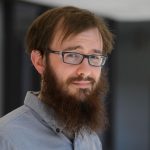
UConn PhD student Daniel Hoying receives Dept. of Energy fellowship
As a theoretical physicist studying the fundamental elements of matter, UConn graduate student Daniel Hoying creates calculations so large and complex they require supercomputers to perform them. So Hoying is obviously excited that he will soon have regular access to one of the world’s most powerful supercomputers at the U.S. Department of Energy’s Brookhaven National […]
[Read More]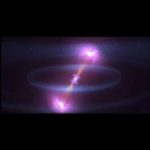
New gravity wave detection signals collision of two dead stars
For the first time, scientists have directly detected gravitational waves — ripples in space-time — in addition to light from the spectacular collision of two neutron stars. This marks the first time that a cosmic event has been viewed in both gravitational waves and light. The discovery was made using the U.S.-based Laser Interferometer Gravitational-Wave […]
[Read More]
Landmark g-2 experiment begins second phase in long career of testing the Standard Model
Instead of directly searching for new particles as the LHC experiments are doing in Geneva, the muon g-2 experiment at Fermilab measures a well-known physical property of the muon to ever greater precision, looking for deviations from the value it should have based on the Standard Model of particle physics, assuming that no new forces […]
[Read More]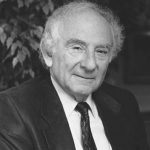
Katzenstein lecture brings Nobel Laureat, UConn alumni to Storrs
The Katzenstein Distinguished Lectures series continued in Fall 2016 for its 19th year, with an October 28, 2016 lecture by Professor Leon N. Cooper of Brown University, entitled “On the Interpretation of the Quantum Theory: Can Free Will And Locality Exist Together In The Quantum Theory?” Professor Cooper shared the 1972 Nobel Prize in Physics […]
[Read More]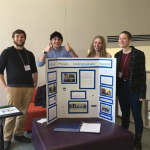
Undergraduate achievements receive wide attention
Whoever said rules were made to be broken wasn’t a physicist. When something doesn’t act the way you think it should, either the rules are wrong, or there’s new physics to be discovered. Which is exactly what UConn’s Connor Occhialini ’18 (CLAS), an honors student majoring in physics and math, found when he began researching scandium fluoride. Most materials swell as they heat up. Scandium fluoride must be doing something else, reasoned Occhialini. […]
[Read More]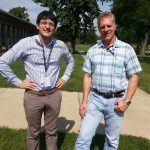
Physics student John Mangeri wins prestigious fellowship
John Mangeri’s Award Lands Him in Argonne National Laboratory John Mangeri (left) with his SCGSR-award host Dr. Olle Heinonen (right) in front of the Chemistry building (bldg. 200) at Argonne National Laboratory. (Photo credit to Dr. Andrea Jokisaari) By Katherine Eastman John Mangeri, a Ph.D. candidate in Dr. Serge Nakhmanson’s “Complex Materials by Computational Design” […]
[Read More]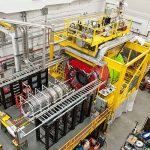
GlueX experiment publishes first scientific results following accelerator upgrade
Researchers working with the Continuous Electron Beam Accelerator Facility (CEBAF) at the U.S. Department of Energy’s Jefferson National Accelerator Facility (J-Lab) have published their first scientific results since the accelerator energy was increased from six billion electron volts (GeV) to 12 GeV. The upgrade was commissioned to enable the next generation of physics experiments that will allow scientists to see smaller bits of matter than have ever been seen before. The first publication from the upgraded CEBAF was published by the GlueX collaboration in the April issue of Physical Review C.
[Read More]
Physics society names three APS Fellows
The American Physical Society (APS) has named three UConn Physics faculty as APS Fellows. APS Fellowship is a distinct honor signifying recognition by one’s professional peers and is an honor bestowed by election. The criterion for election is exceptional contributions to the physics enterprise; e.g., outstanding physics research, important applications of physics, leadership in or […]
[Read More]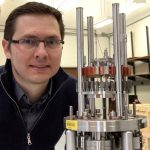
Prof. Sochnikov is a recipient of Montana Instruments Cold Science Exploration Awards
Dr. Sochnikov is a recipient of Montana Instruments Cold Science Exploration Awards Lab Startup Grant. Dr. Ilya Sochnikov has just started new scanning SQUID microscopy lab at the University of Connecticut. Ilya Sochnikov’s research focuses on nanoscale quantum phenomena in new materials. An emergence of a new phenomenon or a phase transition occurs when interactions […]
[Read More]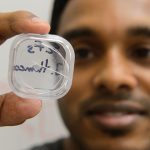
“Caution: Shrinks When Warm”
October 6, 2015 – Kim Krieger – UConn Communications Jason Hancock, Assistant Professor in Physics, with graduate students, Erin Curry and Sahan Handunkanda, have been investigating a substance that shrinks when it warms. Most materials swell when they warm, and shrink when they cool. But UConn physicist Jason Hancock has been investigating a substance that responds in reverse: […]
[Read More]
Physicists Solve Low-Temperature Magnetic Mystery
March 26, 2015 – Tim Miller Researchers have made an experimental breakthrough in explaining a rare property of an exotic magnetic material, potentially opening a path to a host of new technologies. From information storage to magnetic refrigeration, many of tomorrow’s most promising innovations rely on sophisticated magnetic materials, and this discovery opens the door to harnessing […]
[Read More]